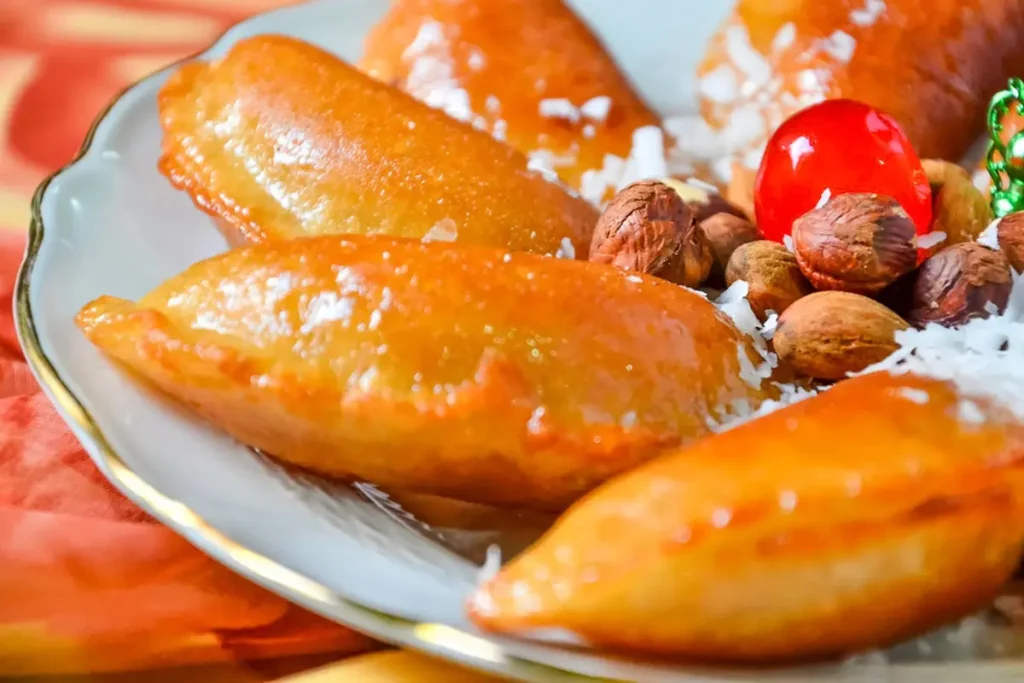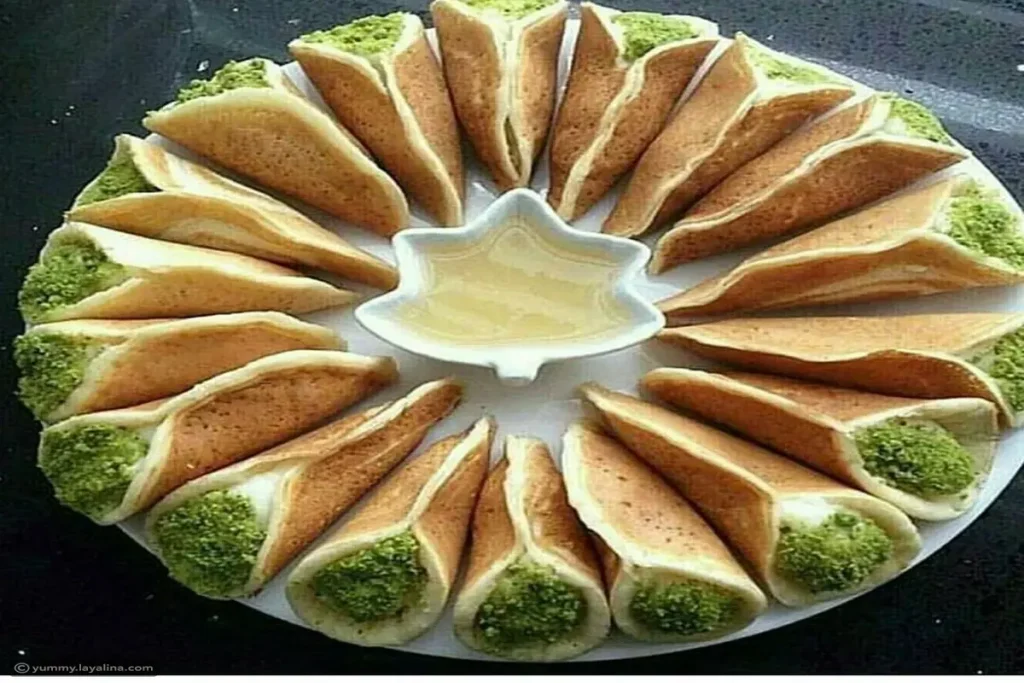The lowest nature reserve on earth !
Qatayef
Detailed recipe to make Atayef from scratch.
Qatayef are traditional Arabic desserts, especially popular during Ramadan in the Levant and Egypt. They are essentially small, pancake-like pastries cooked on one side only. These soft, pliable bases are then filled with a variety of sweet fillings such as chopped nuts like walnuts or almonds, a rich clotted cream called ashta, or sweet cheese. After being filled, the qatayef are folded and sealed, resembling a half-moon shape. They can then be either fried to a golden crisp or baked for a healthier option. The final step involves soaking the cooked qatayef in a fragrant sugar syrup known as attar or qatr, which infuses them with sweetness. Qatayef are a quintessential Ramadan treat, enjoyed after Iftar, and are considered a symbol of generosity and hospitality in Arab culture.
To stuff qatayef, begin by ensuring your qatayef pancakes are pliable and your chosen filling (nuts, cream, or cheese) is prepared. Place a pancake in your palm with the uncooked side up, add a spoonful of filling to the center, being careful not to overfill, and then fold the pancake in half to create a semi-circle. Firmly pinch the edges together to seal the qatayef completely, working your way along the edge to ensure no gaps remain, as this prevents the filling from leaking during cooking; for cream-filled variations, some may be partially sealed, leaving an opening for filling after cooking.


Qatayef are a beloved traditional Arabic dessert, particularly prevalent during the holy month of Ramadan across the Levant and Egypt. These treats are crafted from small, pancake-like pastries, cooked solely on one side. The resulting soft, pliable bases are then generously filled with a variety of sweet fillings, including chopped nuts like walnuts or almonds, a rich clotted cream known as ashta, or sweet cheese. Once filled, the qatayef are folded into a semi-circular shape and sealed, ready for either frying to a golden crisp or baking for a healthier alternative. The final touch involves soaking the cooked qatayef in a fragrant sugar syrup, known as attar or qatr, infusing them with sweetness. Qatayef are an integral part of Ramadan celebrations, enjoyed after Iftar, and stand as a symbol of Arab hospitality and generosity.
This paragraph provides a comprehensive overview of Qatayef, covering their ingredients, preparation, and cultural significance. It highlights their popularity during Ramadan and their role as a symbol of Arab hospitality.
Qatayef is a quintessential Middle Eastern dessert, particularly beloved during the holy month of Ramadan. These sweet treats consist of small, pancake-like pastries cooked on one side only, leaving the other side soft and pliable. This unique cooking method allows for easy folding and sealing once the pastries are filled. Qatayef are a testament to the region’s rich culinary heritage, showcasing a delightful blend of textures and flavors. The soft, doughy exterior encases a variety of sweet fillings, creating a harmonious balance that is both satisfying and indulgent.
The versatility of qatayef is one of its most appealing aspects. They can be filled with a wide range of ingredients, from traditional nuts like walnuts and almonds to creamy ashta or sweet cheese. Once filled, qatayef can be either fried to a golden crisp or baked for a lighter option. The final touch, a generous drenching in fragrant sugar syrup, adds a layer of sweetness that complements the fillings perfectly. Whether enjoyed as a post-iftar treat or a festive dessert, qatayef embody the spirit of Ramadan and the warmth of Arab hospitality.
fried or baked Atayef ?
Qatayef can be prepared in two main ways after they are filled: they can be fried or baked.
Fried Qatayef: This is the more traditional method. The stuffed and sealed qatayef are deep-fried in oil until they become golden brown and crispy. Frying gives them a distinct crunch and a richer flavor.
Baked Qatayef: This is a healthier alternative to frying. The stuffed and sealed qatayef are brushed with a bit of oil or ghee and then baked in the oven until they are golden brown. Baking results in a less greasy qatayef, although they may not be as crispy as the fried version.
Both methods are popular, and the choice between them often comes down to personal preference regarding taste and health considerations.
